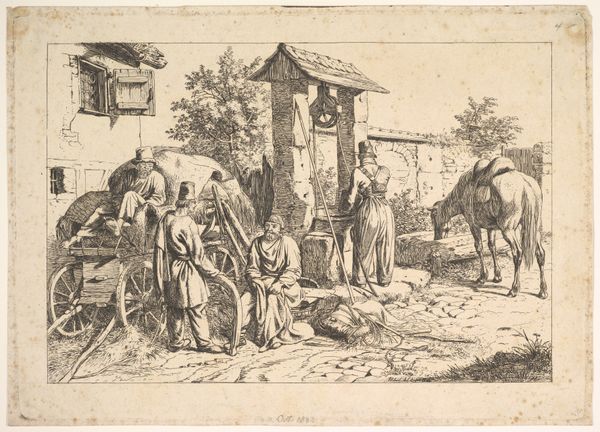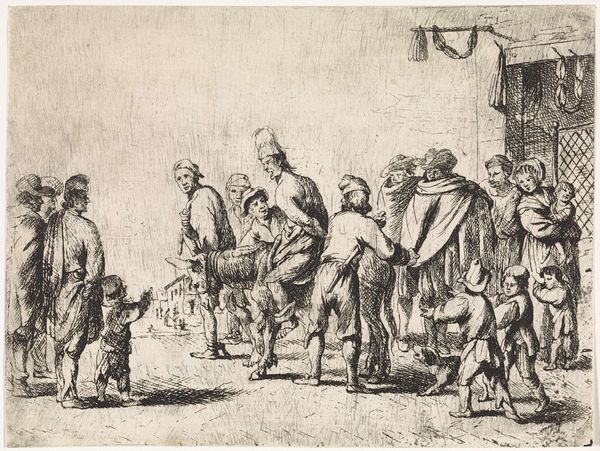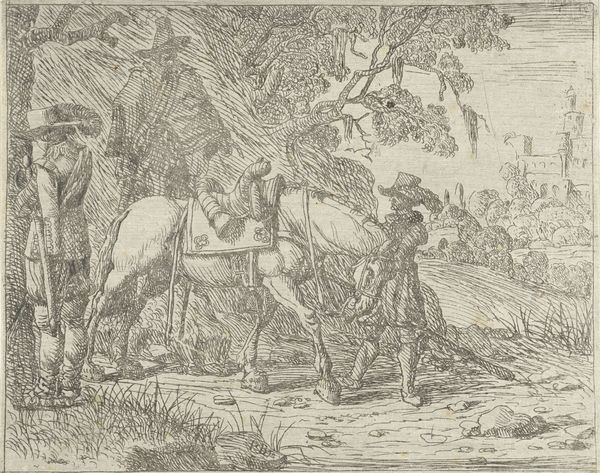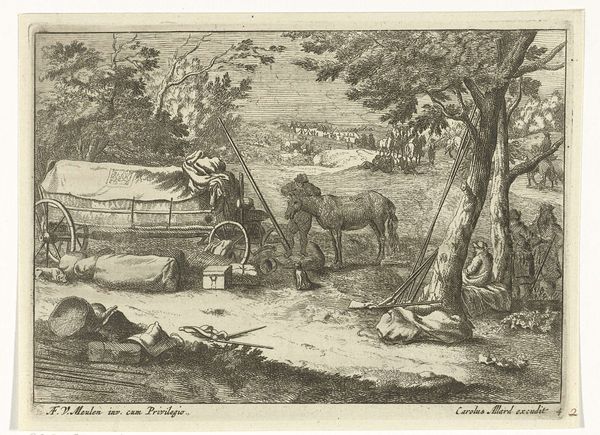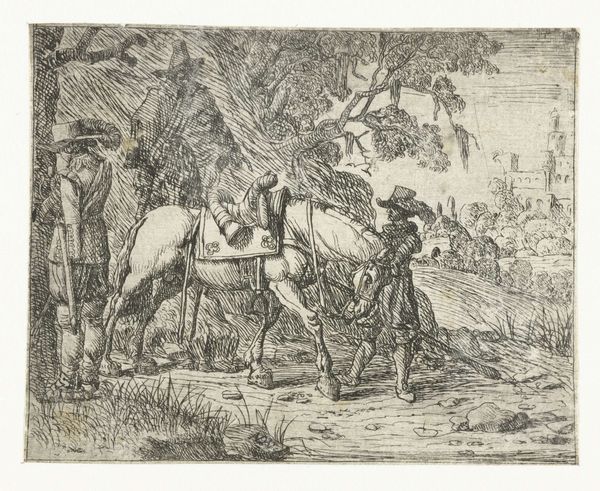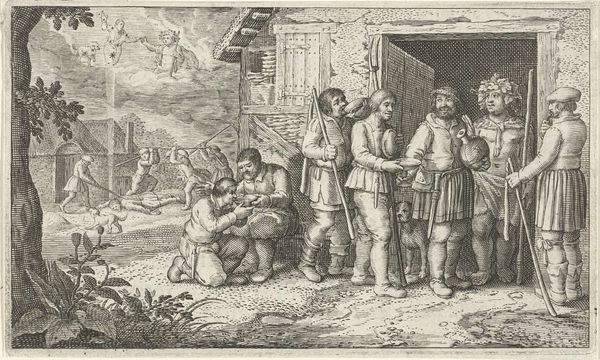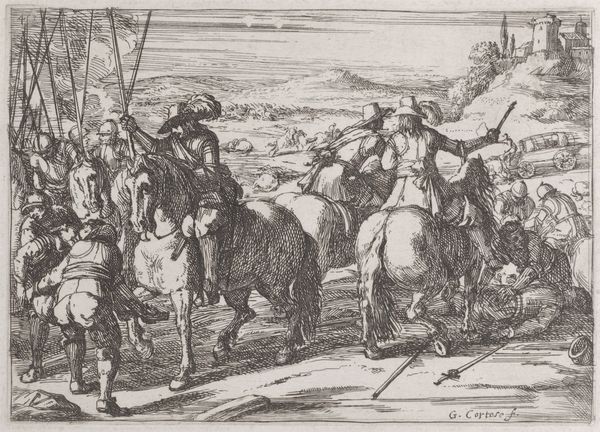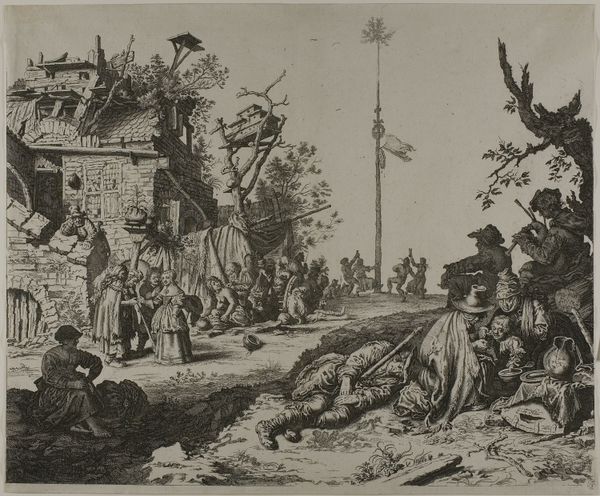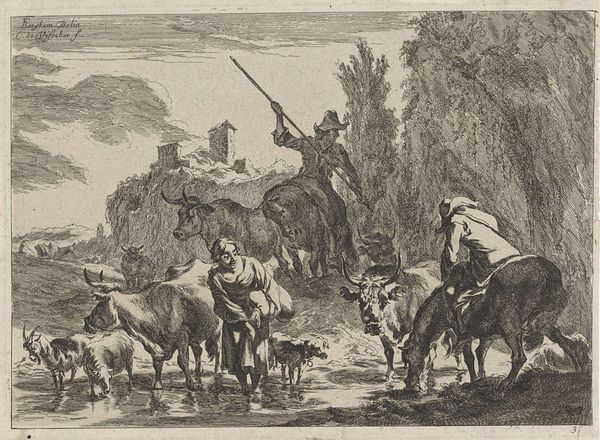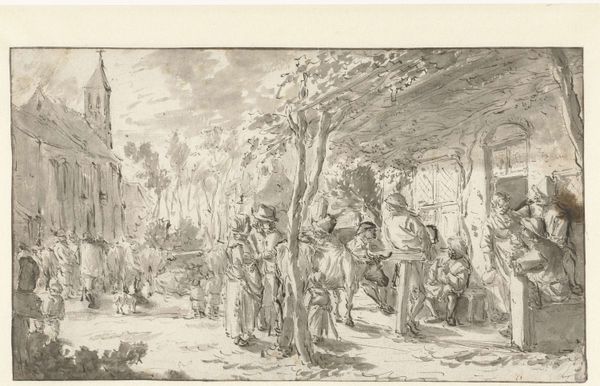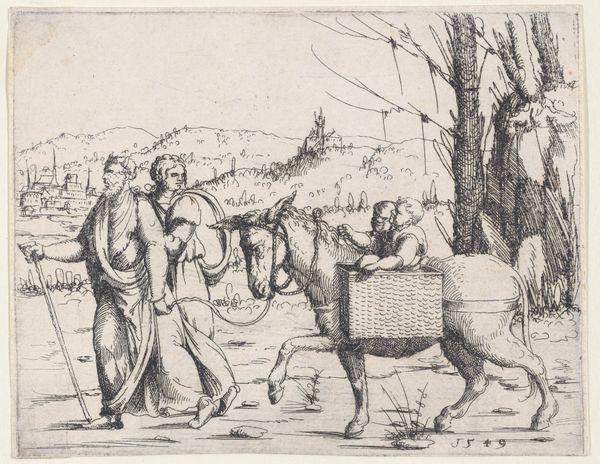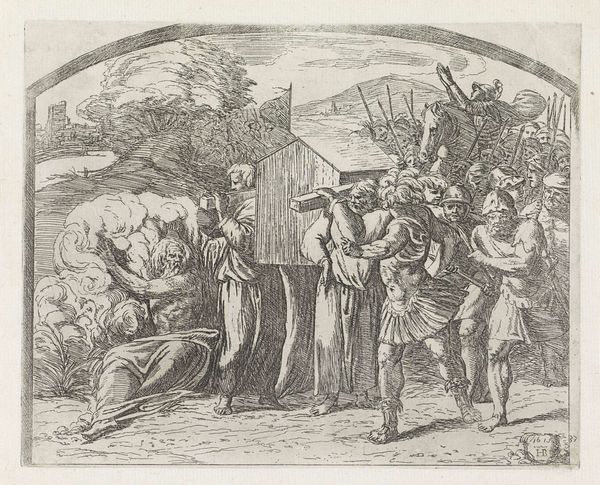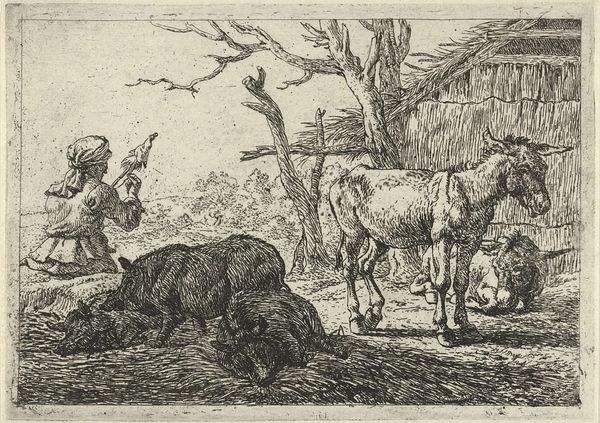
engraving
#
narrative-art
#
baroque
#
landscape
#
figuration
#
line
#
genre-painting
#
engraving
Dimensions: height 278 mm, width 410 mm
Copyright: Rijks Museum: Open Domain
Curator: Looking at this engraving, “The Marriage of Isaac and Rebekah (plate 4),” likely produced between 1585 and 1645 by Gijsbert van Veen, I'm struck by the casual, almost genre-scene quality he brings to this biblical story. Editor: Yes, it feels intimate, despite the grand narrative implied. The monochromatic palette adds to the somber, perhaps even slightly melancholic, atmosphere. What catches my eye, though, is the unusual grouping of figures and how their postures seems staged rather than capturing a scene in movement. It looks performative somehow, with figures enacting familiar roles within a symbolic landscape. Curator: I see what you mean. It lacks the drama one might expect from a scene of arranged marriage central to religious tradition. Van Veen seems more interested in exploring the social dynamics and the landscape's role as witness. These moments of encounter were central in consolidating societal structure in Dutch life. Notice how the figures are positioned between the classical-looking house on the one hand and what is perhaps an indication of how distant, dangerous, and perhaps promising this betrothal is in a natural landscape that mirrors the character of a people! Editor: Exactly. And those figures around the house, what do they signify to you? They seem like the village elders who are more representative of the community's interest in Isaac, Rebekah, and their future offspring, as important symbols of continuity, legacy, and divine promise. It also raises questions. Look, some details, the man comforting a camel, the servant urging on his master’s horse. To me, they create a complex and symbolic counterpoint to the marital union taking place. The horseman might have doubts; his servant tugs, and so on. What did van Veen want to say by adding the anxiety about an alliance with such powerful implications for generations to come? Curator: It’s the way these figures relate, framed within the context of communal expectations, that tells us so much about the social codes of the time. Editor: Indeed. Considering its scale as an engraving, its power rests not in overt symbolism or dramatic action but in those subtle arrangements and in Van Veen's unique depiction of the shared and individual experiences that accompanied such crucial junctions of life and community. Curator: It shows us how artists could interpret sacred stories to highlight contemporary concerns. Editor: Ultimately, this engraving illuminates marriage as both a personal journey and a public act, ripe with cultural meaning that extends well beyond the individual characters depicted here.
Comments
No comments
Be the first to comment and join the conversation on the ultimate creative platform.
